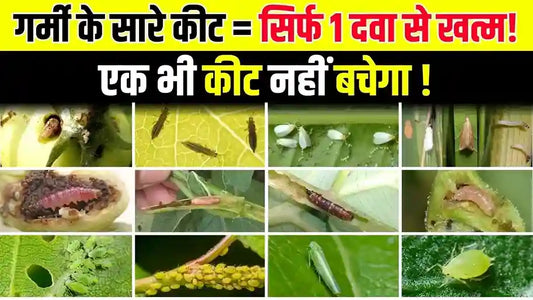Rust is a common fungal disease that affects a wide range of plants, from vegetables and fruits to ornamental flowers and trees. It's caused by various fungi in the order Pucciniales, each specializing in specific host plants. While not usually fatal, rust can significantly reduce plant health and yield. Rust can significantly reduce plant growth, photosynthesis, and fruit or seed production. Loss of leaves can affect the plant's ability to produce energy and nutrients. Severely infected plants may produce fewer or smaller fruits or seeds, impacting overall yield and quality.

- Type of Infestation: Disease
- Common Name: Rust
- Causal Organism: Uromyces phaseoli
- Affected Parts Of the plant: Leaves, Stems, Pods
Identification:
- Leaf damage: Severely infected leaves will become dry, shriveled, and eventually fall off, leading to defoliation.
- Spread: While the main target is leaves, in rare cases, pustules might appear on stems and pods, although this is less common.
Environmental favorable factors for pests/Diseases:
- Temperature: Optimal growth and spore germination of the rust fungus occur between 18-25°C (64-77°F).
- Humidity: Relative humidity above 70% provides a moist environment for spore germination, infection, and fungal growth. Frequent rain, morning dew, or humid microclimates within dense crop stands create favorable conditions for rust development.
Symptoms of Pest/Disease:
- Both the upper and lower surfaces of leaves are affected.
- Severely infected leaves become dry, shriveled, and eventually fall off, leading to defoliation.
- Reduced leaf area hinders photosynthesis and nutrient uptake, affecting plant health and yield.
Measures to control Pests/Diseases:
|
Products |
Technical Names |
Dosages |
|
Propiconazole 25 % EC |
200- 300 ml per acre |
|
|
Carbendazim 12 % + Mancozeb 63 % WP |
Use 300-400 grams per acre |
|
|
Mancozeb 75% WP |
500gm per Acre. |
Control Rust in Green Gram related FAQS
Q. What is Rust in Green Gram?
A. Rust in green gram is a fungal disease caused by Uromyces phaseoli. It affects the leaves, stems, and pods of the plant, leading to shriveled, yellowish leaves and reduced yield.
Q. What Causes Rust in Green Gram?
A. Rust in green gram is caused by the fungus Uromyces phaseoli. The disease thrives in humid conditions with temperatures between 18-25°C, and is often spread by rain and dew.
Q. What are the Symptoms of Rust in Green Gram?
A. Symptoms include small, orange or reddish pustules on leaves, stems, and pods. Infected leaves become dry and shriveled, leading to defoliation and decreased photosynthesis.
Q. How Do You Control Rust in Green Gram?
A. Control measures include using fungicides such as Propiconazole (25% EC), Carbendazim (12% WP), and Mancozeb (75% WP). Avoid dense planting and maintain proper spacing to reduce humidity around plants.
Q. Which Fungicide is Best for Treating Rust in Green Gram?
A. The best fungicides for treating rust in green gram include Boost Propiconazole, Samartha Carbendazim, and Mancozeb. These fungicides help prevent the spread of rust and improve plant health.










